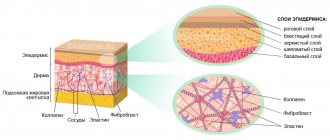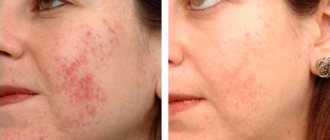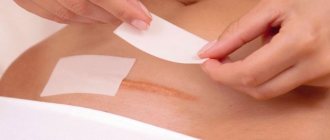Surgery (Greek cheirurgia from cheir hand and ergon work) is a field of medicine that studies acute and chronic diseases, the main method of treatment of which is surgery, and develops techniques, methods and techniques for performing operations.
Today, surgery is a leading, along with therapy, scientific clinical discipline. Modern surgery is one of the areas of medicine for which the year, month, and day of birth are known. October 16, 1846 - On that day, at the Massachusetts General Hospital, dentist William P. Morton euthanized a young man who had been successfully operated on by surgeon John C. Warren for a vascular tumor of the upper jaw. Since then, surgery has gone through many stages in its development: for example, in the 60s of the 19th century, antiseptics and asepsis created opportunities for the development of abdominal surgery; it became possible to operate without fear of the threat of peritonitis. A little later, in the 80s of the 19th century, with the development of the doctrine of brain localization, neurosurgery began to develop. The success of the first brain surgery was that the surgeon found the tumor where it was identified by the neurologist. For a long time, the chest cavity remained inaccessible to surgeons, because upon opening, the patients died from pneumothorax - the entry of atmospheric air into the pleural cavity. But in 1909, intratracheal anesthesia was invented, which opened the way for thoracic surgery. Around the same time, antibiotics were discovered. The 20th century made operations on the open heart and great vessels possible, and marked the beginning of tissue and organ transplantation... The so-called. Surgical diseases do not represent any strictly defined range of diseases: as medical knowledge expands and technical improvement of methods, the boundaries of this concept are constantly changing. For example, until the end of the 19th century, medicine did not know the surgical treatment of appendicitis, and this disease was relegated to the field of therapy; in modern practice, acute appendicitis is treated only surgically. Or, for example, until the mid-20th century, only general practitioners dealt with heart disease, but already in the late 40s, cardiovascular surgery began to rapidly develop, treating heart defects, cardiac aneurysms, angina pectoris and myocardial infarction.
Modern methods of treatment in surgery
Minimally invasiveness (that is, the focus on minimizing the area of intervention) is perhaps the most characteristic feature of modern surgical technologies. These, for example, include endoscopic methods that allow operations without incisions using several punctures. Today they have firmly taken positions in almost all areas of surgery - abdominal (removal of the gallbladder, appendix, stomach and intestinal tumors, etc.), thoracic, urology (transurethral methods for removing prostate adenoma, bladder tumors, restoring the patency of the ureters, removing urinary tract stones etc.), neurosurgery and even plastic surgery. Flexible, thin catheters have revolutionized vascular surgery. With their help, you can diagnose vascular diseases and immediately treat them. For example, the so-called transluminal angioplasty involves inserting a thin catheter with a balloon at the end to the narrowed area of the artery. Then, by inflating the balloon, it is possible to expand the lumen of the artery. Modern technologies have made it possible to create stents - frames made of special wires that prevent the lumen of such an enlarged artery from narrowing again.
Modern surgery is increasingly becoming reconstructive - aimed at restoring or replacing the affected organ: a vessel prosthesis, an artificial heart valve, strengthening hernias with a synthetic mesh, etc.
The third way in which surgical technologies are developing is low-traumatic . The scalpel has long ceased to be the main instrument of the surgeon. Electrosurgical, laser and radio wave surgical devices have been operating for decades. Today, the electric knife is being replaced by cold plasma and molecular resonance instruments. Their main feature is a smooth cut with minimal thermal damage and rapid tissue healing without scarring. Many operations that previously required a long hospital stay for the patient are now performed on an outpatient basis in just one day.
Outpatient surgery is a promising area of modern medicine, combining all the latest knowledge and technologies. In the West, about 70% of all surgical operations are performed on an outpatient basis. In Russia, this area is also becoming increasingly popular. Benefits of outpatient surgery:
- The patient receives full surgical treatment at the modern level, in comfortable conditions, and in just 1 day
- The operation is carried out quickly, the waiting period is reduced
- Minimally invasive surgical techniques are used that do not require long-term rehabilitation
- The cost of the operation is significantly reduced, since there is no need to pay for a hospital stay
- From a psychological point of view, it is more comfortable to spend the postoperative period at home than in a hospital
- The patient can return to the normal rhythm of life in the shortest possible time
Suitable for patients with:
- Flabby skin
- Drooping eyelids
- Wrinkles of any depth
- Hyperpigmentation
- Scars after acne
- Stretch marks and scars of any complexity
- Porous and loose skin
Laser procedures are the most effective, safe and preserve a natural appearance.
What is the reason for this effect? The CO2 laser produces precise and gentle ablation (evaporation) of the upper layers of the skin and activates the work of fibroblasts, resulting in active synthesis of collagen and elastic and tissue remodeling.
Medical surgical office
In the medical surgical office, surgeons perform the following procedures:
- Marginal resection and removal of ingrown toenails
- Removal of scars, keloids
- Removal of benign formations of skin and subcutaneous fat
- Treatment of hemorrhoids (desarterization, laser sclerotherapy and latex ligation)
- Sclerotherapy of varicose veins, teleectasia
- Opening of a boil, carbuncle, atheroma, phlegmon, abscess, bursitis, hidradenitis, EC suppuration
- Treatment of heel spurs
- Joint blockade
- Ear correction
- Minimally invasive navigation surgery procedures: Ultrasound-guided puncture or drainage
- Dressing under ultrasound control (including with the introduction of a drug)
- Fistulography
- Replacing drainage under X-ray control
You can get advice on pathologies
- abdominal cavity,
- rectum,
- varicose veins of the lower extremities
- pathologies of the skin and subcutaneous tissue
Laser resurfacing of the face and body is effective for the following problems:
Photoaging and chronoaging
Symptoms: dry skin, multiple wrinkles, drooping face, drooping eyelids, hyperpigmentation, sagging skin, parchment paper appearance, tired appearance, senile keratomas and papillomas.
Who is it recommended for: women over 30 years of age for preventive and therapeutic purposes.
Desired result: smooth, soft, tightened skin without age spots, lifting due to skin contraction, skin tightening, uniform fresh complexion, open look.
Atrophic scars
Symptoms: atrophic (with a pit) scars of varying depths, porous, loose skin, multiple purplish-red vascular spots, hyperpigmentation, comedones.
Who is it recommended for: from 18 years of age in the presence of appropriate symptoms and persistent remission of acne to improve the quality of life and self-confidence.
Desired result: uniform complexion, narrowing of pores, smooth relief, absence of scars.
Drooping eyelids, age-related changes in the skin of the eyelids
Laser blepharoplasty is a non-surgical lifting of the upper and lower eyelids.
Who is it recommended for: women over 30 years of age for preventive and therapeutic purposes.
Desired result: thickening of the eyelid skin, lightening, elimination of crow's feet, skin tightening.
Stretch marks, scars and scars
Symptoms: post-traumatic scars, stretch marks after childbirth or sudden weight changes, post-operative scars, scars after blepharoplasty, hypertrophic and keloid scars.
For whom it is recommended: from 18 years of age if appropriate symptoms are present and 2 weeks after removal of sutures.
Desired result: cosmetic reconstruction of the scar, improved quality of life.
Laser resurfacing of the face and body is the gold standard for the treatment of scar deformities
Scar deformities are the most difficult formations to correct. To achieve maximum results, it is recommended to repeat the procedures once every 1-2 months with a course of two procedures.
Contraindications to laser procedures:
- Fresh tan
- Poor healing
- Taking photosensitizing drugs
- Pregnancy and lactation
- Skin diseases in the acute stage
- Chronic and mental disorders in the acute stage
- Herpes in the acute stage
- Oncological diseases
Preparation for the procedure
- Examination by a dermato-cosmetologist 14 days before the procedure
- Limiting UV radiation for 1 month
- Limitation of baths and saunas for 3 days
- Avoid alcohol for 3 days
Blepharoplasty: main methods of operation, indications for performance
Blepharoplasty in Chelny is performed for various aesthetic and medical indications:
- chronic bags under the eyes;
- drooping upper eyelid;
- deep folds of skin;
- abnormalities in eye shape;
- pronounced tear troughs;
- drooping corners of the eyes;
- asymmetry;
- age-related changes.
The best surgeons with many years of experience and high qualifications perform lower and upper blepharoplasty of any complexity. Before performing surgery, it is necessary to conduct a consultation and examination to select the optimal technique for performing the operation. If necessary, a specialist will help correct the shape of the eyelids.
Nowadays transconjunctival eyelid surgery is gaining more and more popularity. The operation allows you to eliminate fat deposits. The technique is recommended for up to 35 years of age: this is due to the elasticity of the skin. The intervention involves an atraumatic intervention, which can significantly speed up the recovery process.
Serious age-related changes require a more suitable operation - blepharoplasty of the lower and upper eyelids, which can be performed simultaneously. This intervention is called circular; its duration depends on the initial picture, but no more than 3 hours. A return to the usual rhythm of life is possible within a few days.
Laser resurfacing of face and body in Naberezhnye Chelny
The cosmetology department of the Unimed clinic in Naberezhnye Chelny performs a variety of laser procedures, such as laser resurfacing of the face and body, peeling, removal of stretch marks (striae), scars, including after blepharoplasty, papillomas, laser blepharoplasty of the upper eyelids. The appointment is conducted by a cosmetologist-dermatologist, trichologist Daglaryan Kristine Aykaramovna .
In the gynecology department you can undergo laser intimate rejuvenation.
Find out prices for laser cosmetology procedures.
Return to department
Blepharoplasty in Naberezhnye Chelny
The skin around the eyes is the first to reveal your true age.
Not only do the first signs of aging hint at years, but drooping eyelids can tell a lot about frequent stress, fatigue and, of course, age. For these reasons, the look seems tired, downcast, and the face becomes sad. These imperfections add 5, and sometimes 10 years. Cosmetics help eliminate these imperfections in the initial stages, but after a certain point it is necessary to resort to more effective methods - blepharoplasty. This is a completely safe surgical intervention, which involves removing excess skin tissue and fat. Eyelid surgery allows you to correct the incision, increase or decrease the size of the eyes, raise the corners, and get rid of the “tired look”.
Blepharoplasty at the Wellness Clinic helps eliminate imperfections for a long time. This effect is impossible without the help of a qualified surgeon. High qualifications, many years of experience in surgical practice, regular improvement of skills, and innovative technologies provide blepharoplasty of the lower and upper eyelids with maximum results with minimal risk of complications. Our doctors guarantee a short recovery period and no postoperative scars.
How is blepharoplasty of the lower and upper eyelids performed?
Upper and lower eyelid blepharoplasty surgery is often performed simultaneously. But the methods for eliminating defects in these two cases are very different. Sometimes a midface lift surgery is performed at the same time to make the overall rejuvenation effect even better.
Upper eyelid blepharoplasty
The indication for upper eyelid blepharoplasty is most often fatty hernias or folds of “excess” skin that hang over the eye. To remove them, the surgeon makes an incision along the fold of the upper eyelid.
Lower eyelid blepharoplasty
Lower eyelid blepharoplasty surgery is a more complex process. The surgeon requires maximum care and precision of manipulation. Indications for such intervention are “bags” under the eyes, wrinkles and excess skin caused by subcutaneous hernias.
This operation can be carried out in two ways:
- Lower eyelid incision. Parallel to the edge of eyelash growth, 3-4 millimeters away from it, the surgeon makes an incision. Through this incision, fatty hernias and excess skin are removed. Postoperative scars in this case are almost invisible.
- Section of the mucous membrane of the eyelid . An incision is made along the conjunctiva either in the classical way or with a laser. In the second case, the operation is called laser transconjunctival blepharoplasty. The fatty hernia is also removed through an internal incision. When using this method, there are no external scars.
Anesthesia
During the operation, the patient is under local anesthesia or intravenous anesthesia.
Duration
The duration of the operation is influenced by the number of defects eliminated. Depending on its complexity, the time spent by the patient on the operating table can vary from 30 minutes to 3 hours.
Postoperative period and rehabilitation
Immediately after all surgical procedures, a thick bandage with ice will be applied to the patient’s eyes for 20 minutes. This is done in order to prevent the appearance of bruises and swelling. Stitches are usually removed on the fourth day. The total rehabilitation period is approximately one week. There may be some slight bruising and swelling at first, but this can be relieved with cold compresses. The eyes may water for a while, especially when there is wind. Also during the rehabilitation process, experts recommend such cosmetic procedures as:
- soft peeling;
- lifting
- face massage
After eyelid surgery, experts do not recommend the following for two weeks:
- visit the bathhouse, sauna, solarium;
- is exposed to the sun without sunglasses;
- exercise and lift weights.
It is worth noting that with the help of blepharoplasty it will not be possible to remove wrinkles near the outer corners of the eyes, those same “crow’s feet”. For this purpose, the doctor may select another surgical method or cosmetic procedure. Expression wrinkles around the eyes can be easily removed using injections with special preparations.
Risks
Like any surgical procedure, blepharoplasty may have some risks, which you will be informed about before signing your consent for surgery. But modern equipment and qualified doctors make it possible to eliminate or reduce risks and complications to a minimum.
Prices for blepharoplasty (eyelid lift) in Kazan
To find out exactly how much the surgery to restore the beauty of your eyes will cost you, sign up for a consultation with a specialist at the Giannis clinic. Approximate prices are indicated in our price list. The price of blepharoplasty (eyelid lift) in Kazan is influenced by several factors:
- problem to be resolved;
- method of operation;
- specialist qualifications
Have an upper or lower eyelid lift surgery at the Giannis Clinic! Our qualified plastic surgeons will professionally perform an operation of any complexity without leaving any scars on the skin! High-quality service and excellent results are guaranteed! Sign up for a consultation right now by just calling us!
Our plastic surgeons:
- Zhanna Iskanderovna Kuznetsova
- Mikhail Viktorovich Larionov
Blepharoplasty (eyelid lift) in Kazan
Modern blepharoplasty (eyelid lift) in Kazan is offered at the European level by qualified plastic surgeons of the Giannis clinic. Each patient is provided with comfort and complete confidentiality!
By excising excess fatty tissue and skin, the doctor can eliminate such “popular” defects as bags under the eyes and drooping upper eyelids. The ever-tired look will also be a thing of the past! After the operation, the patient can look at the world with eyes wide open in the truest sense of the expression.
Contraindications and preparation for eye blepharoplasty
When deciding to undergo eye blepharoplasty, it is important not only to carefully select a clinic and specialist, but also to study the list of contraindications to this intervention.
The Giannis Clinic identifies the following types of diseases for which surgery is not performed:
- hypertension and cardiovascular diseases
- increased intraocular pressure;
- dry eye syndrome;
- thyroid diseases
- diabetes;
- oncology;
- bleeding disorders
To detect hidden diseases, the patient will have to undergo some additional tests, which include a general blood and urine test, a test for RW, HIV, and hepatitis. The blood type and Rh factor must be determined. After examining the patient’s medical history and eliminating all possible contraindications, the doctor will set a date for the operation.










